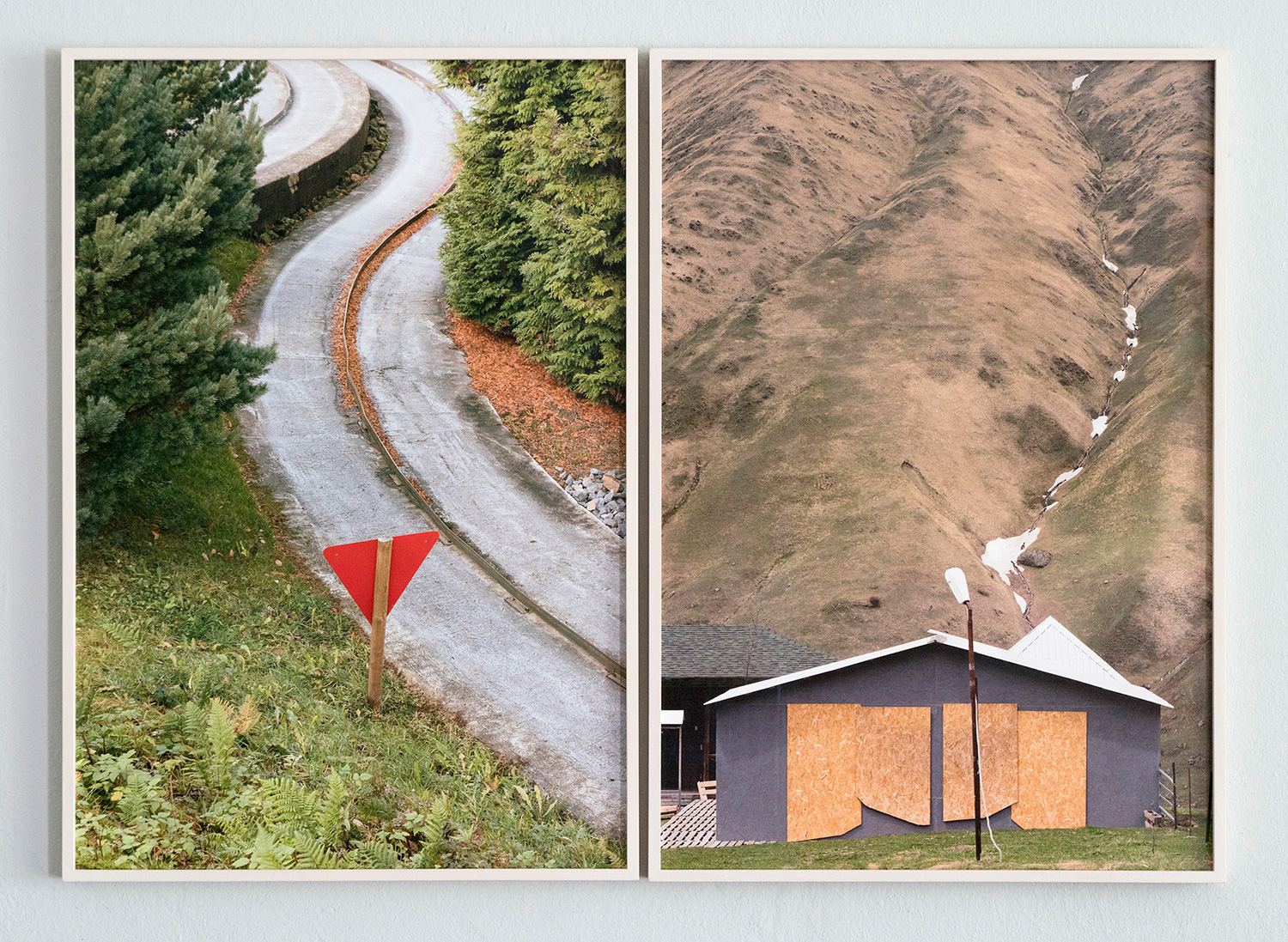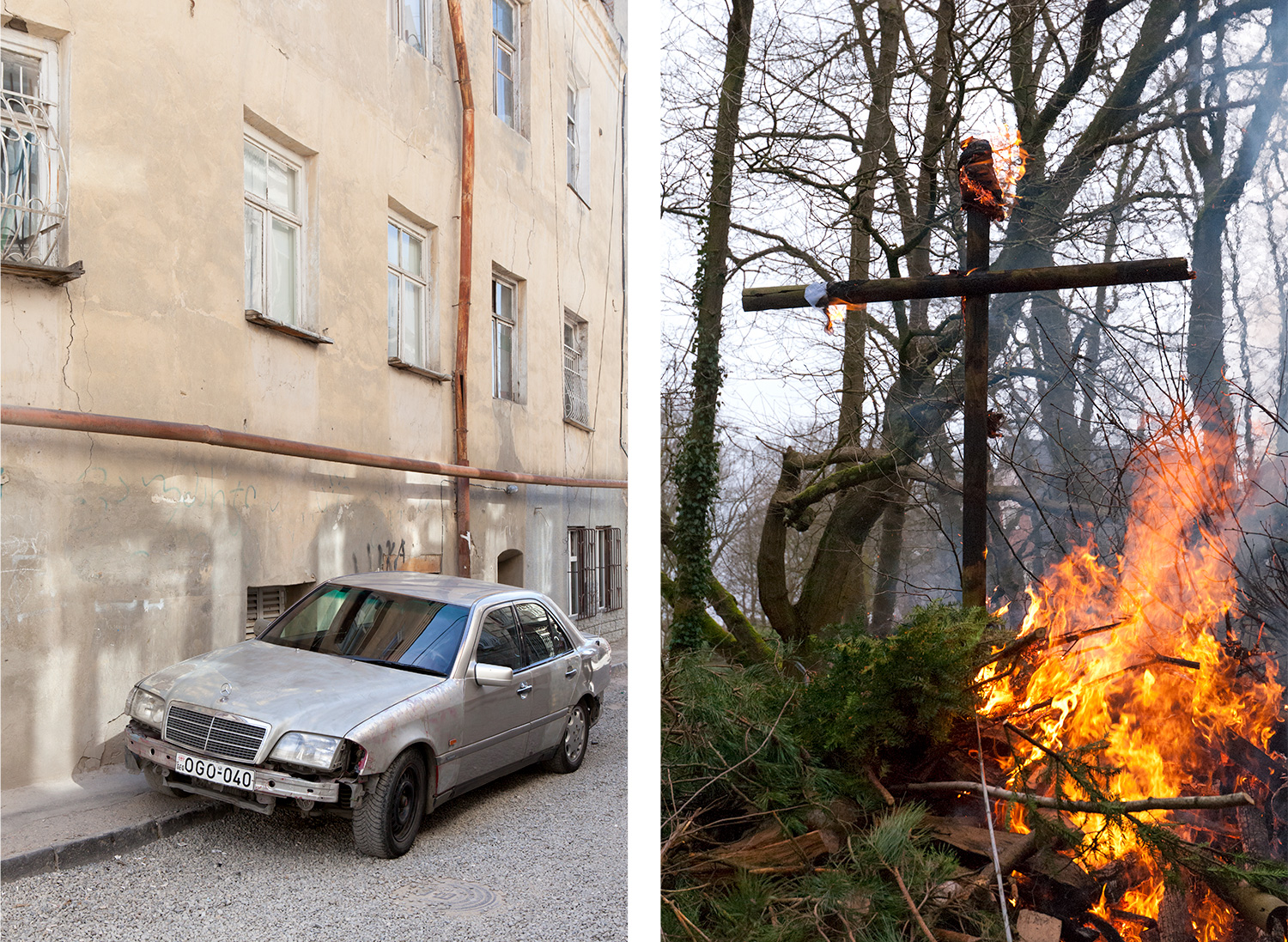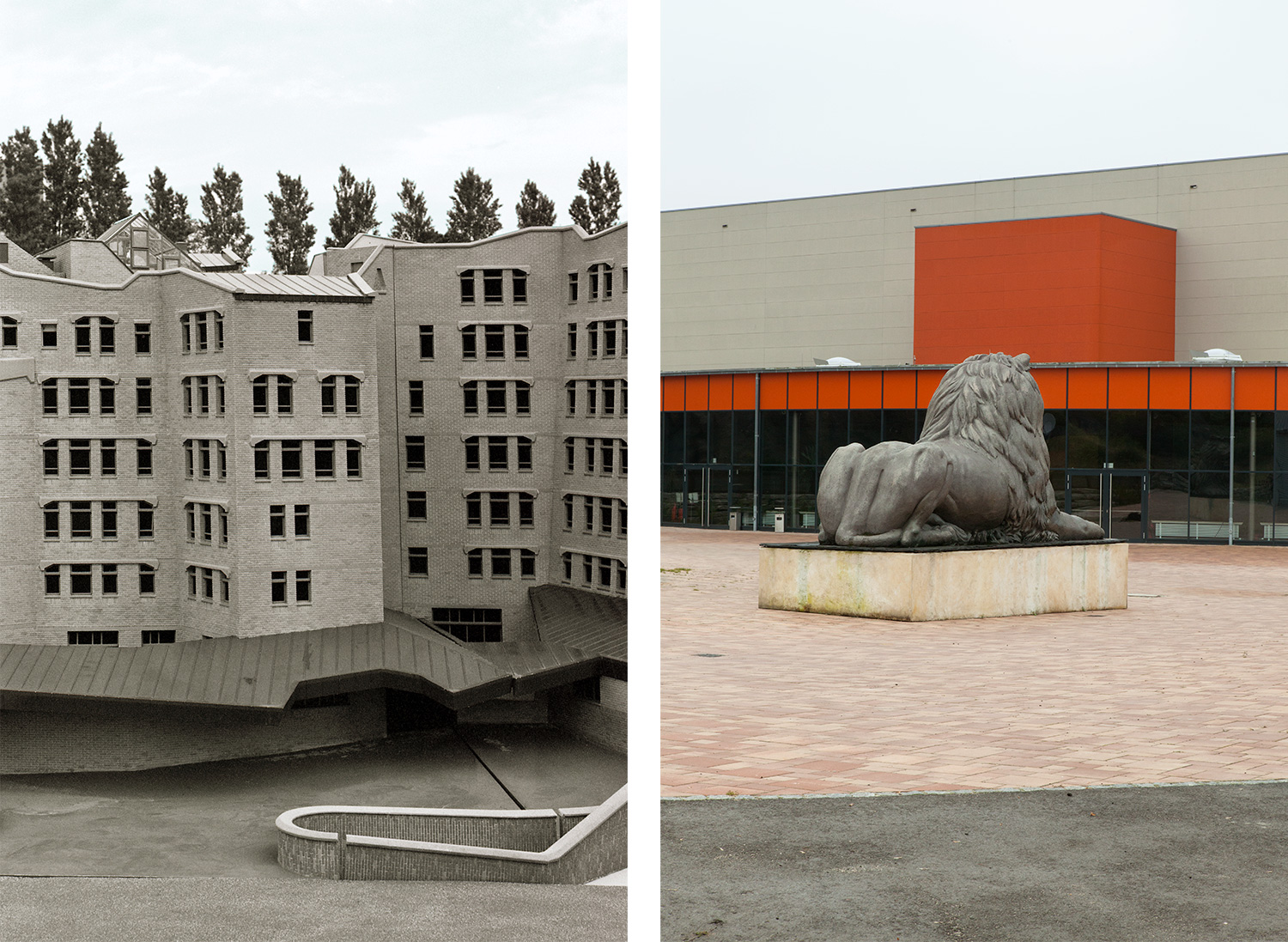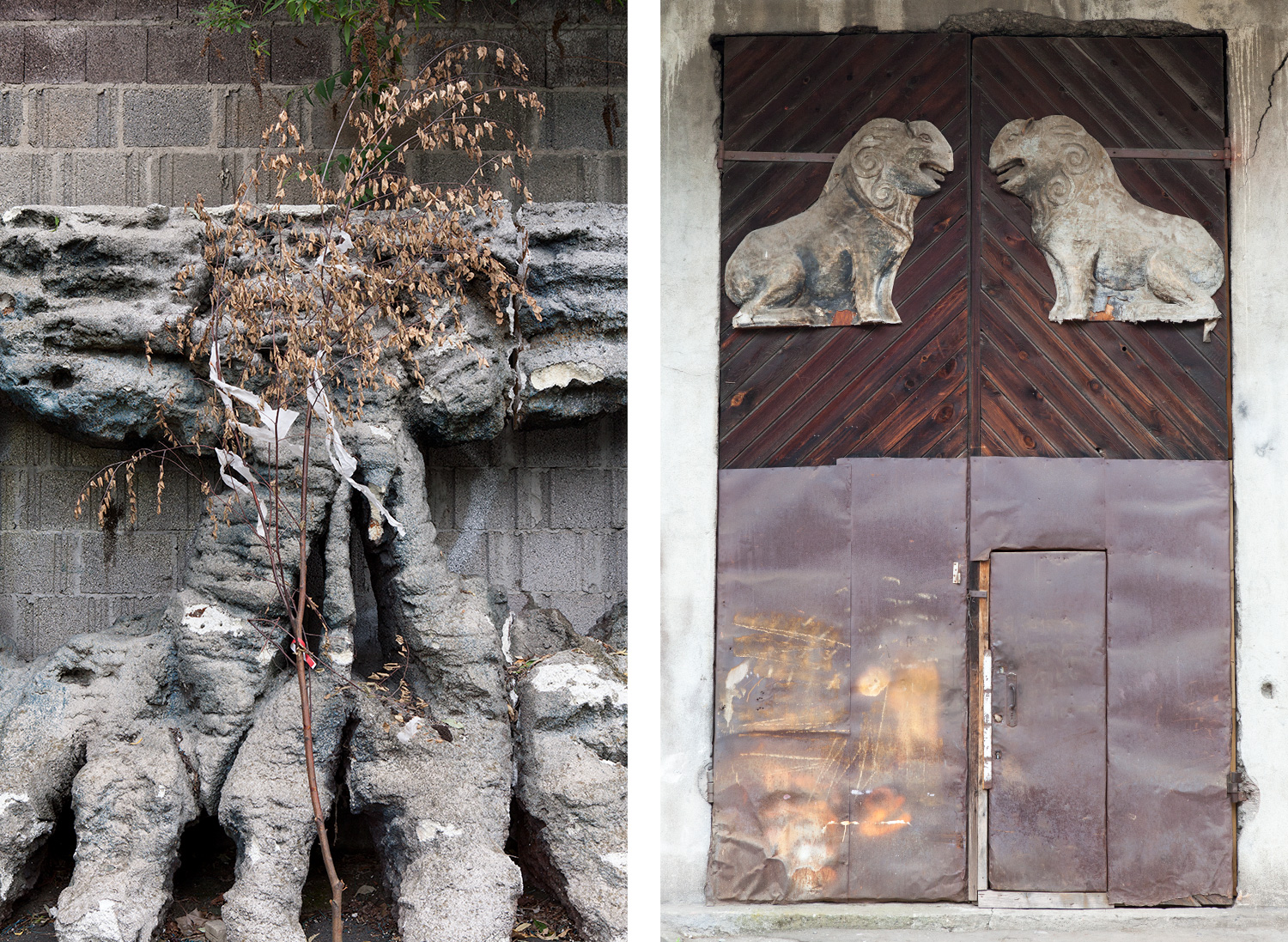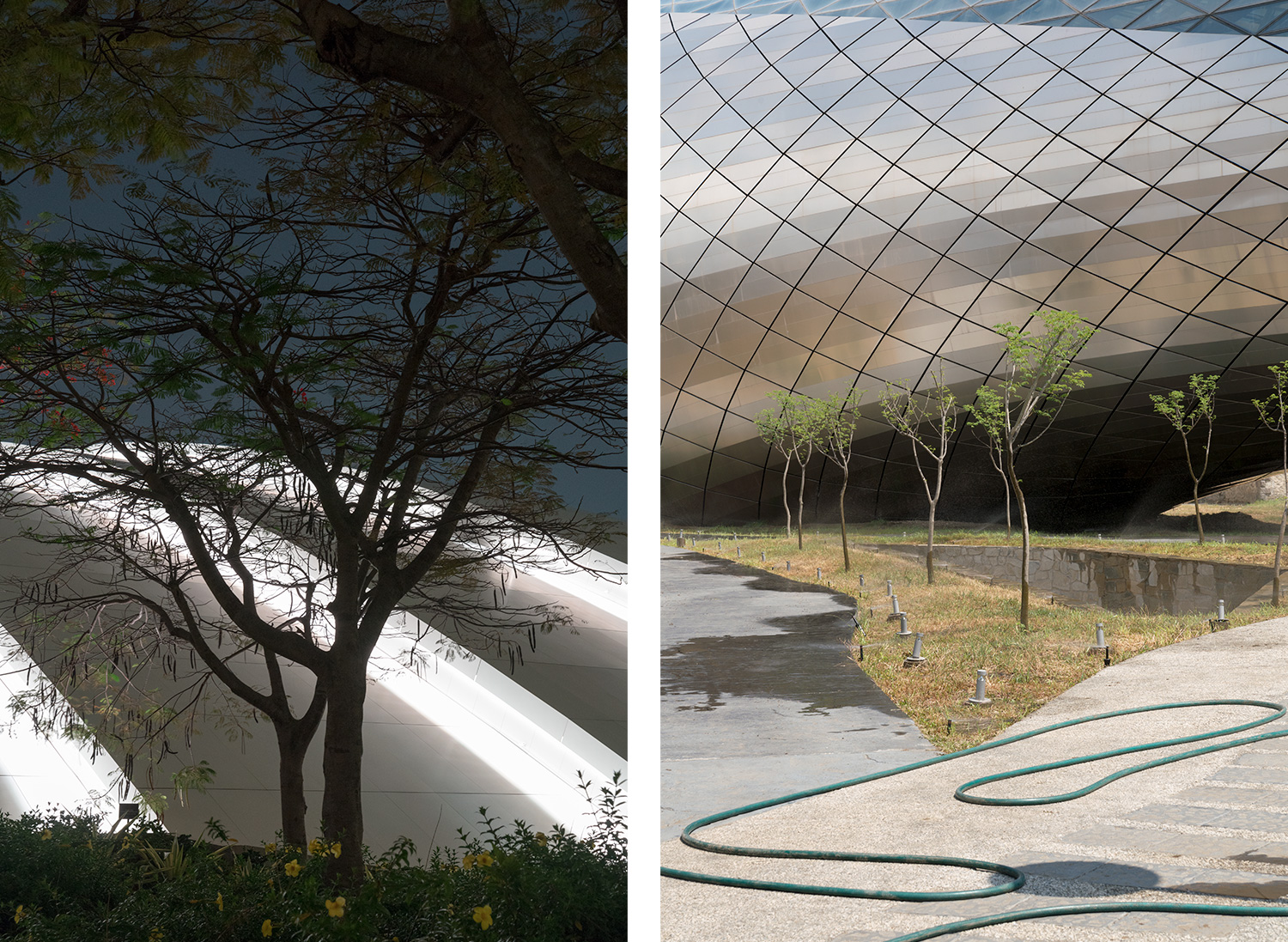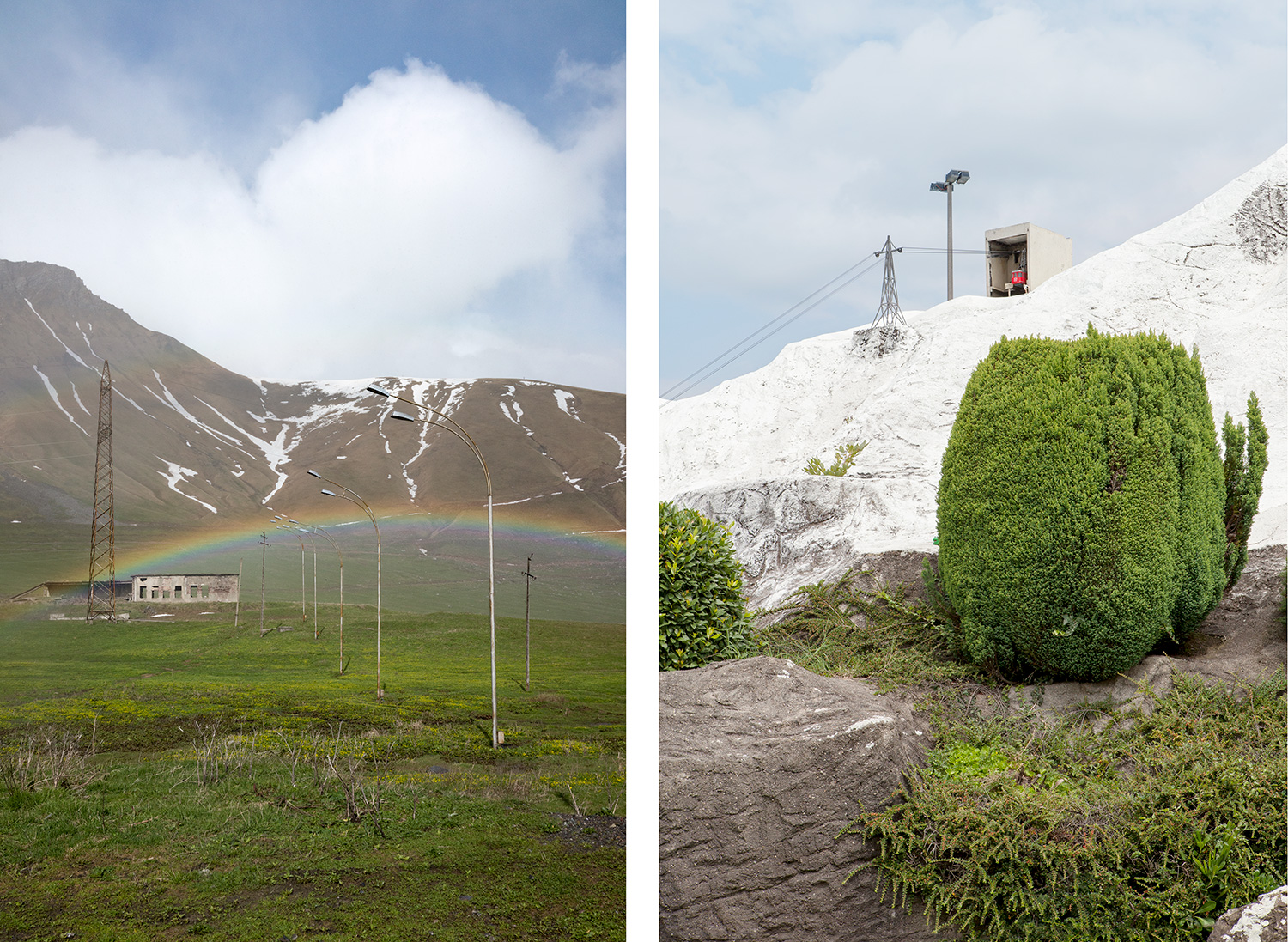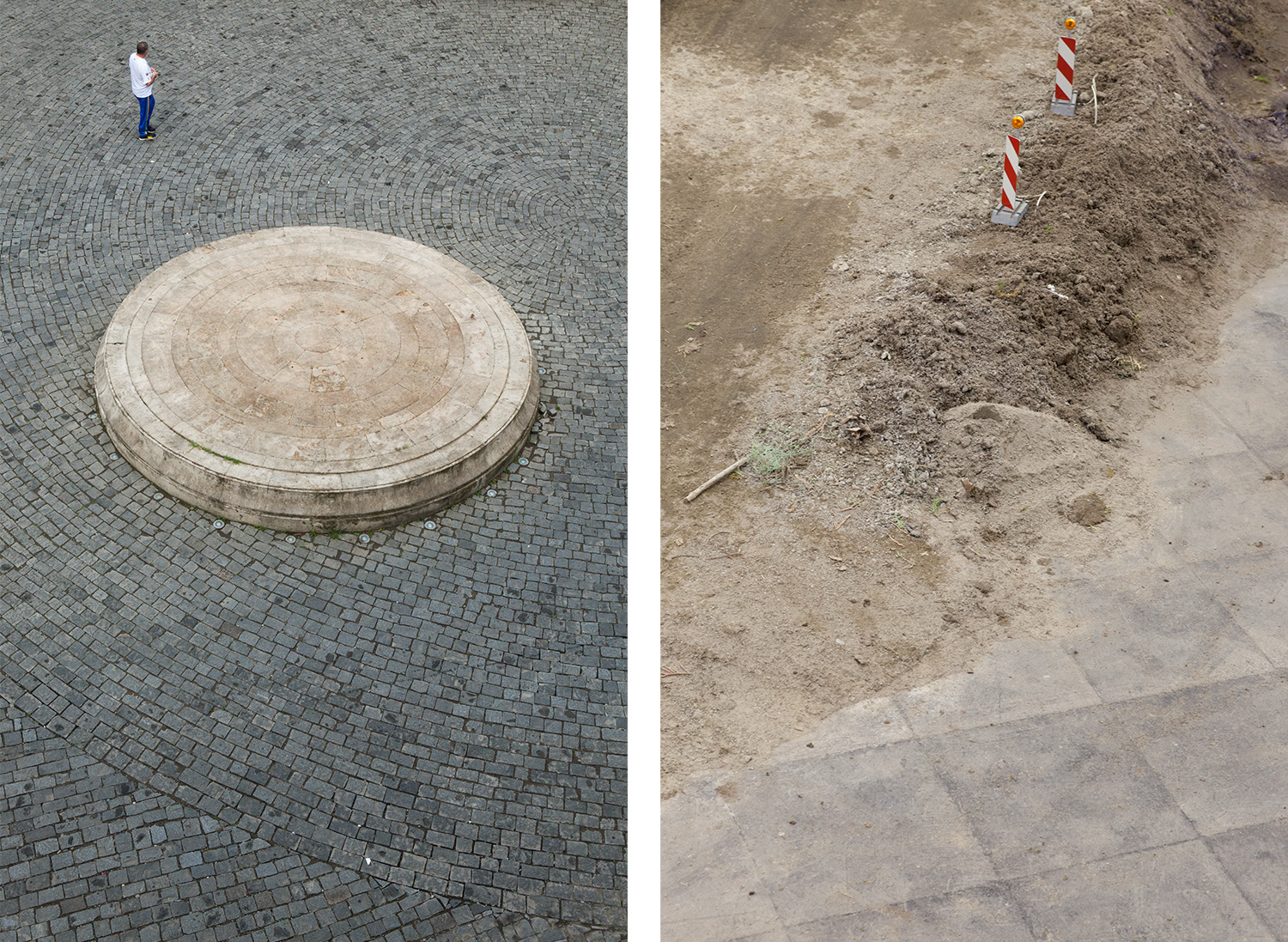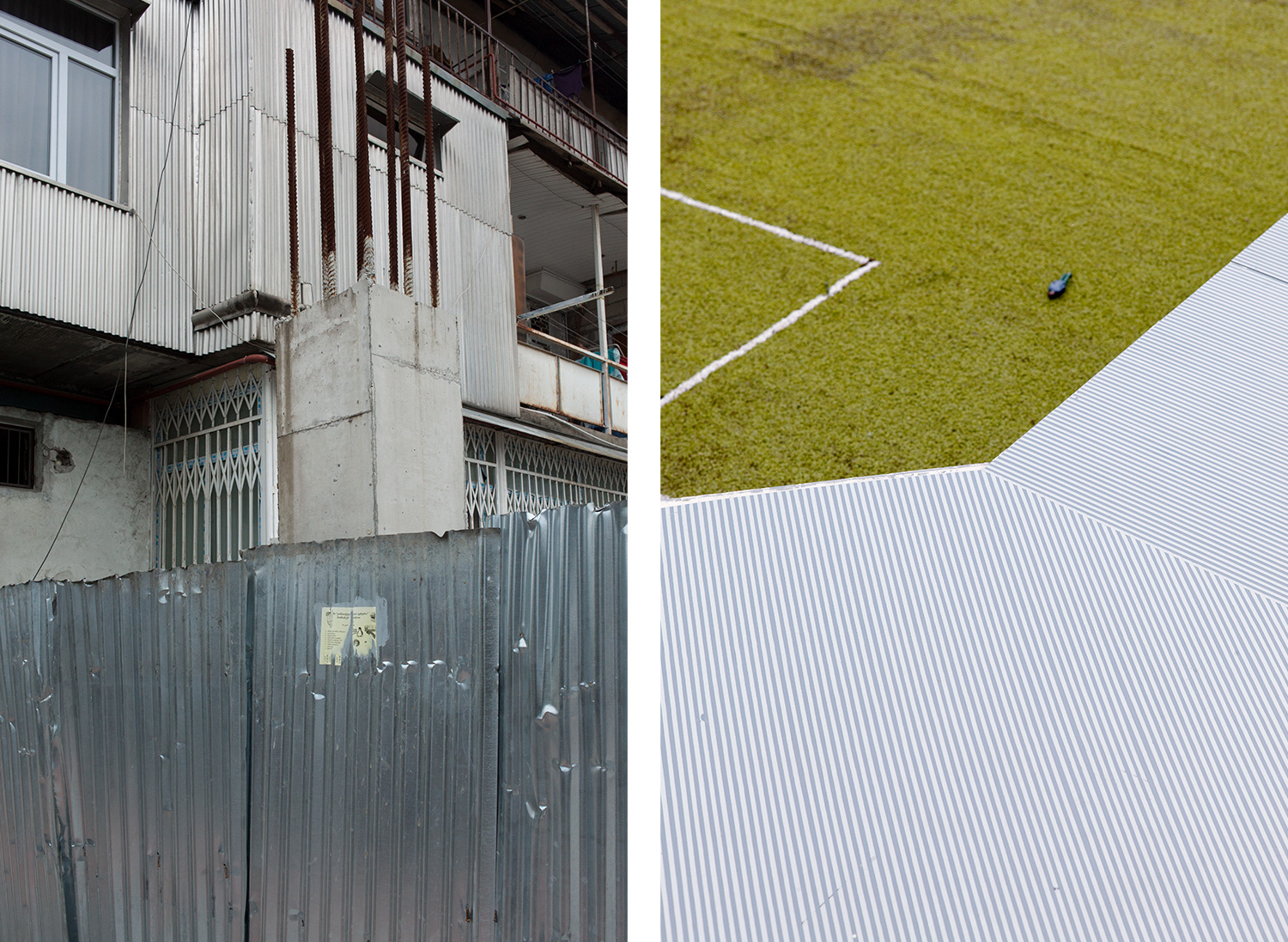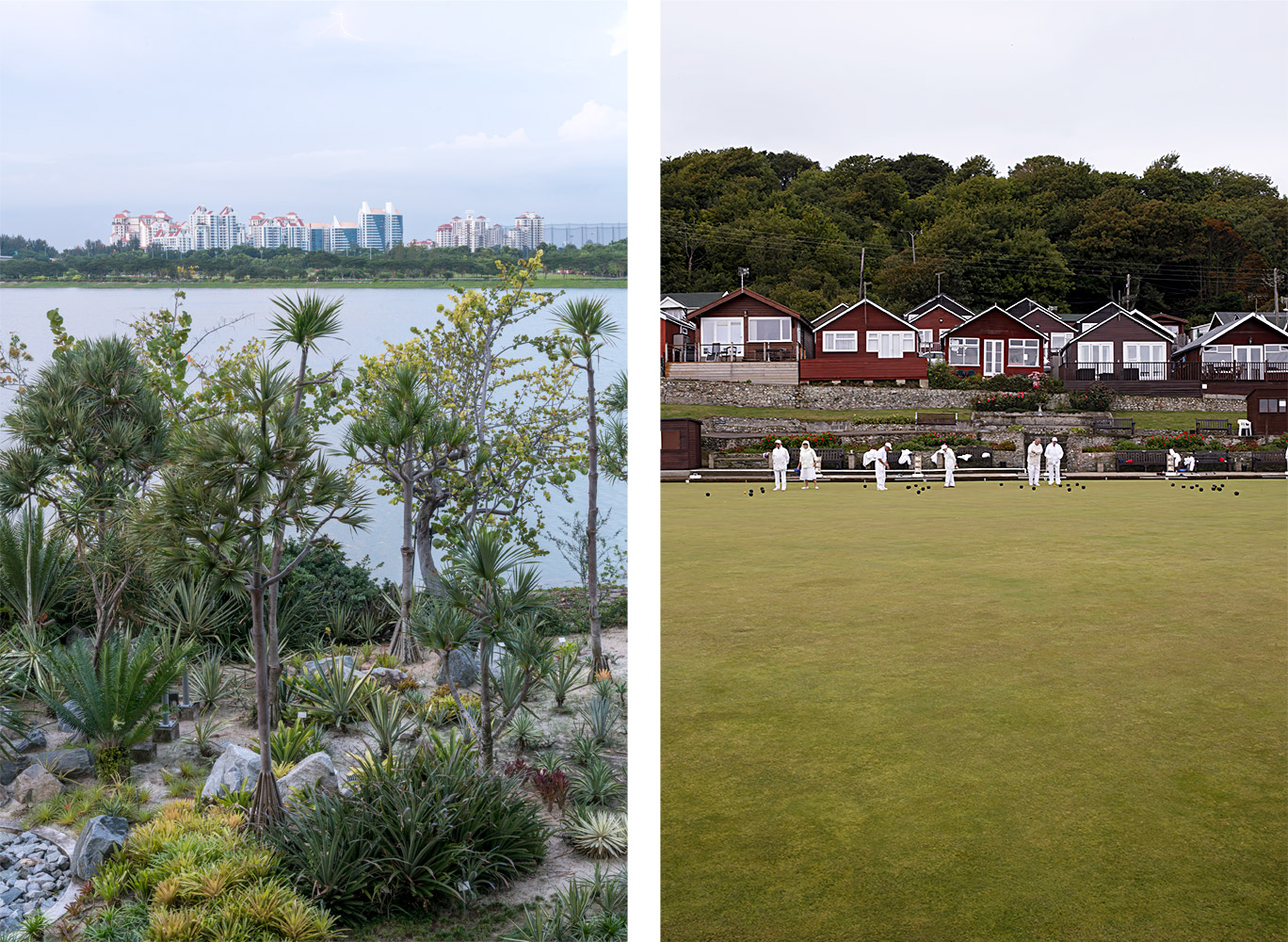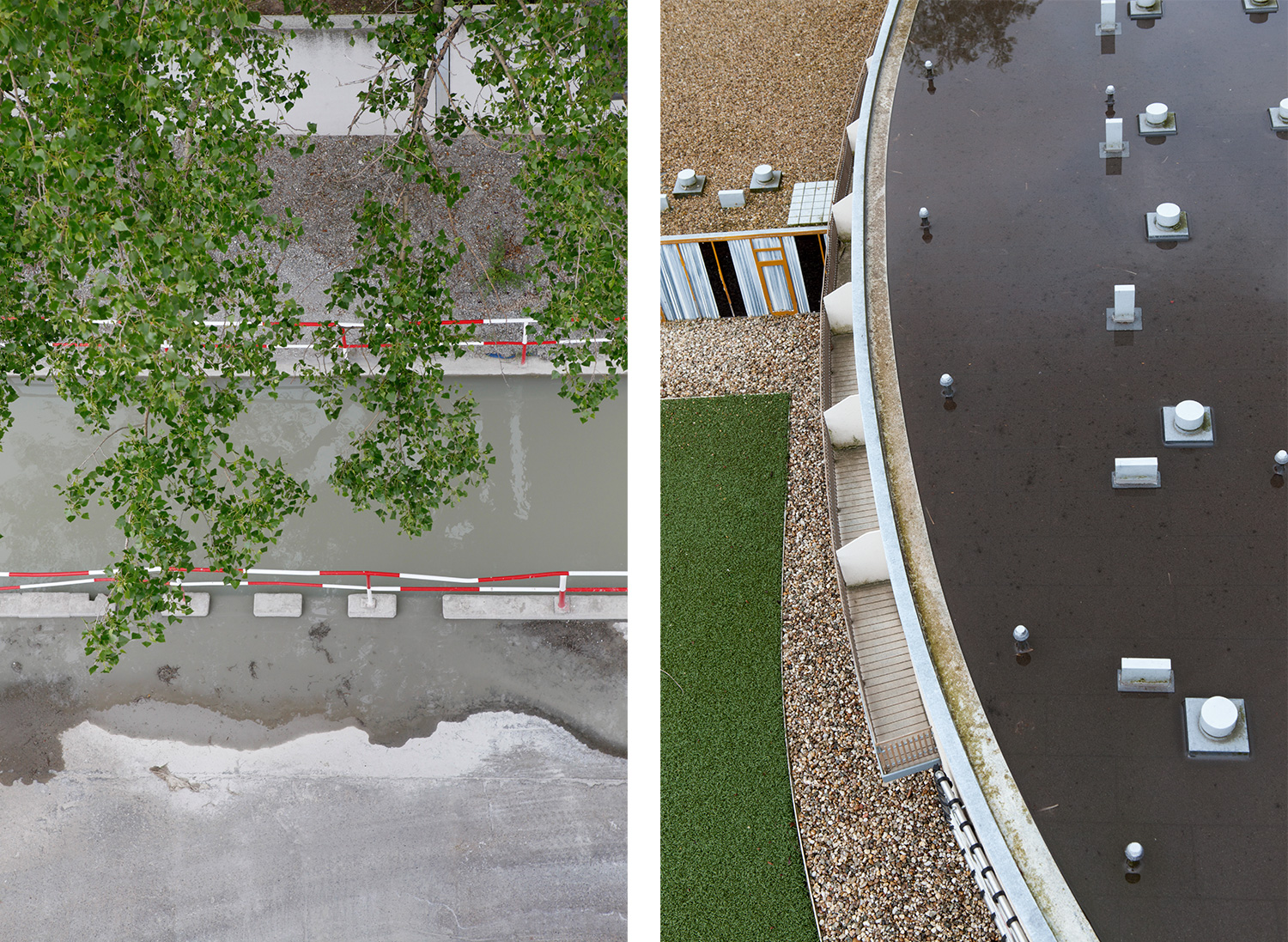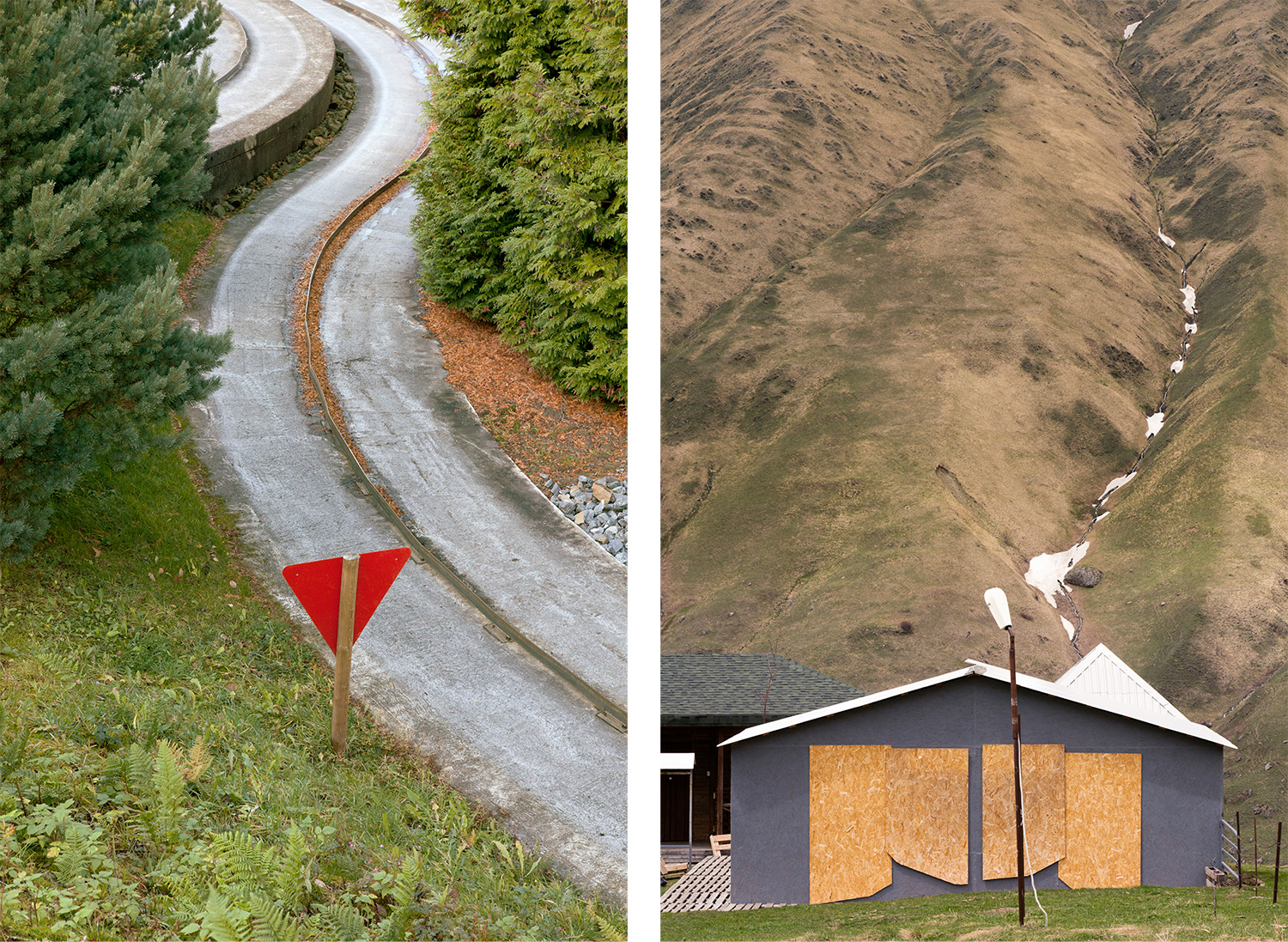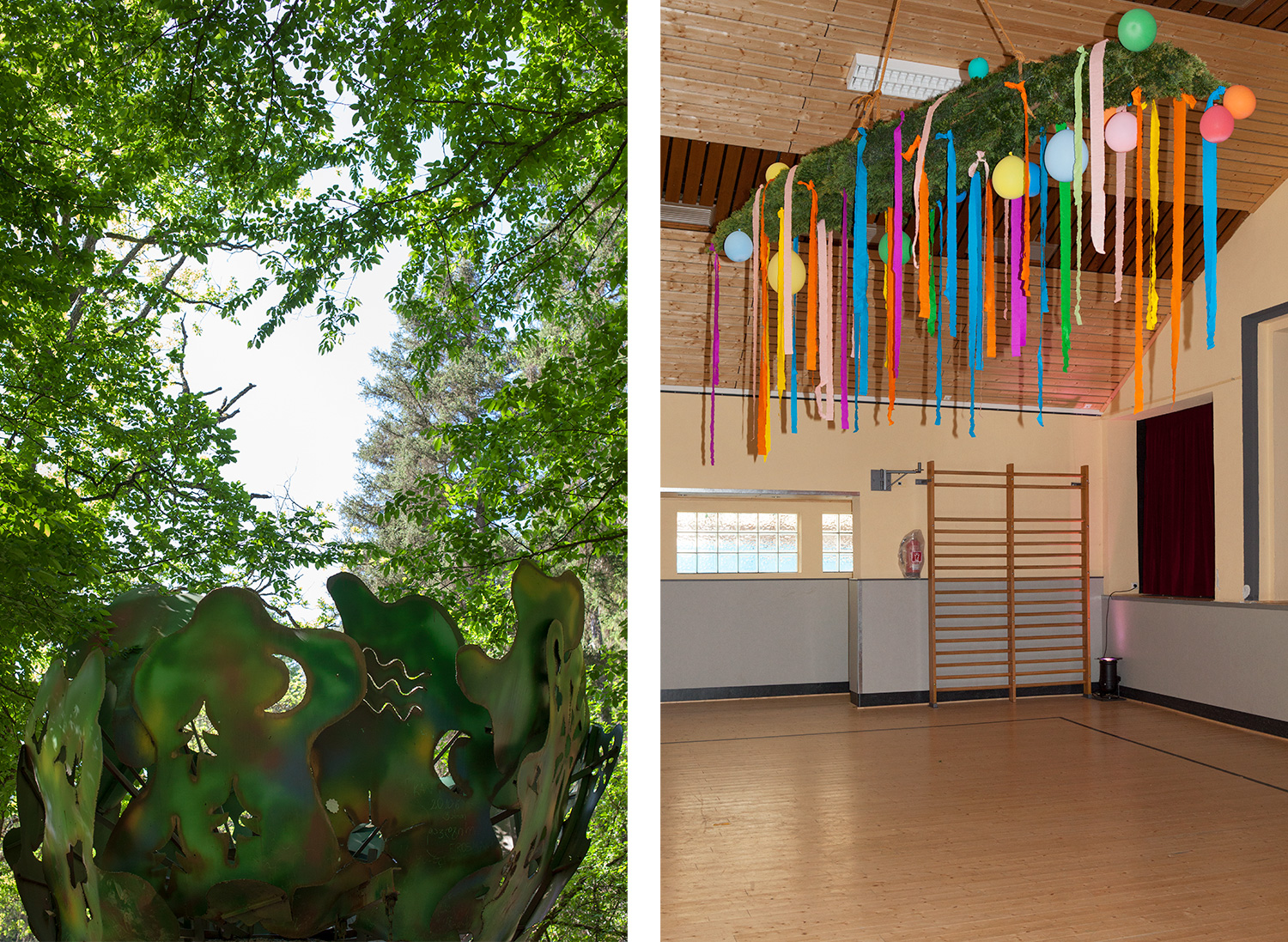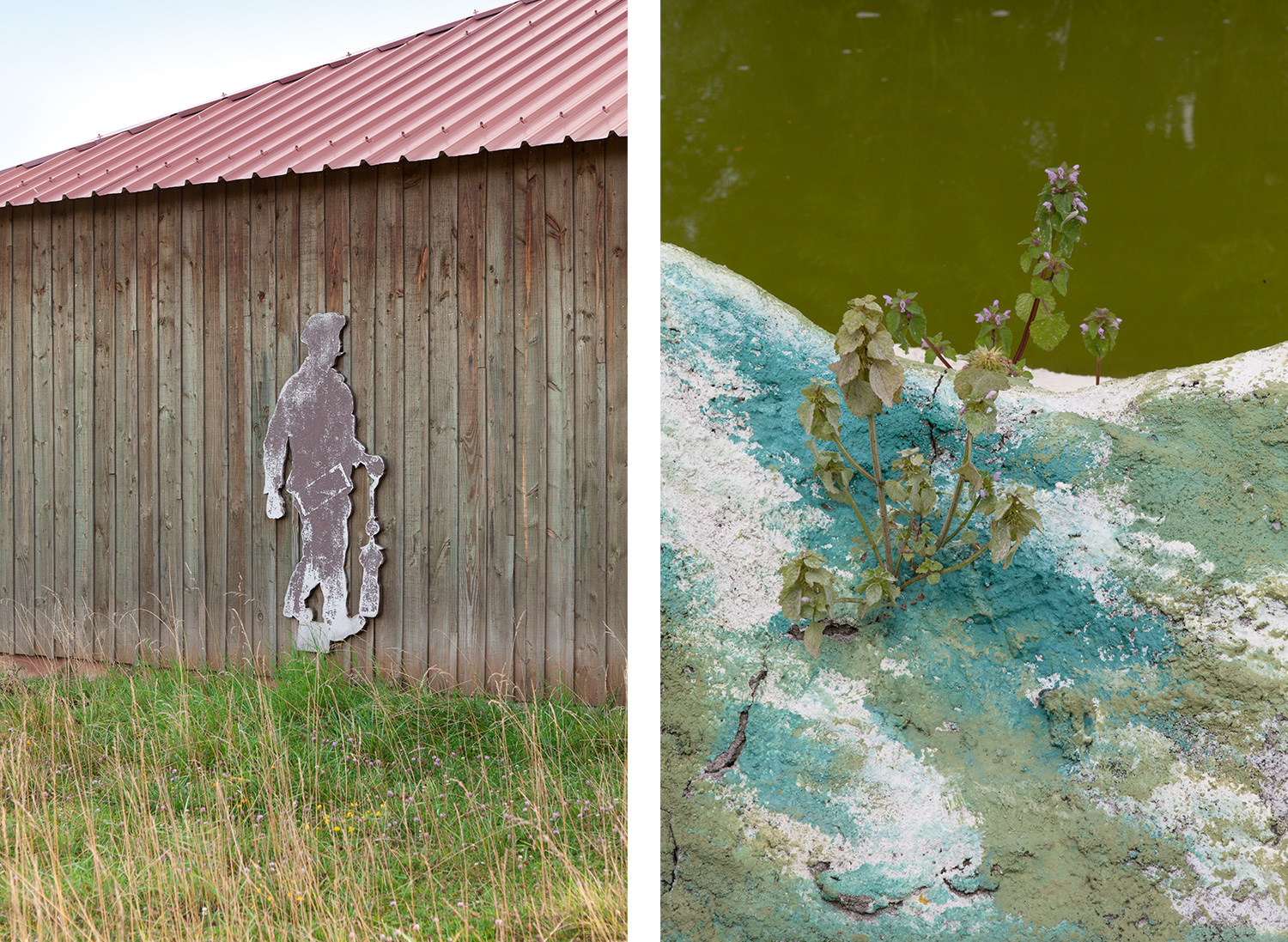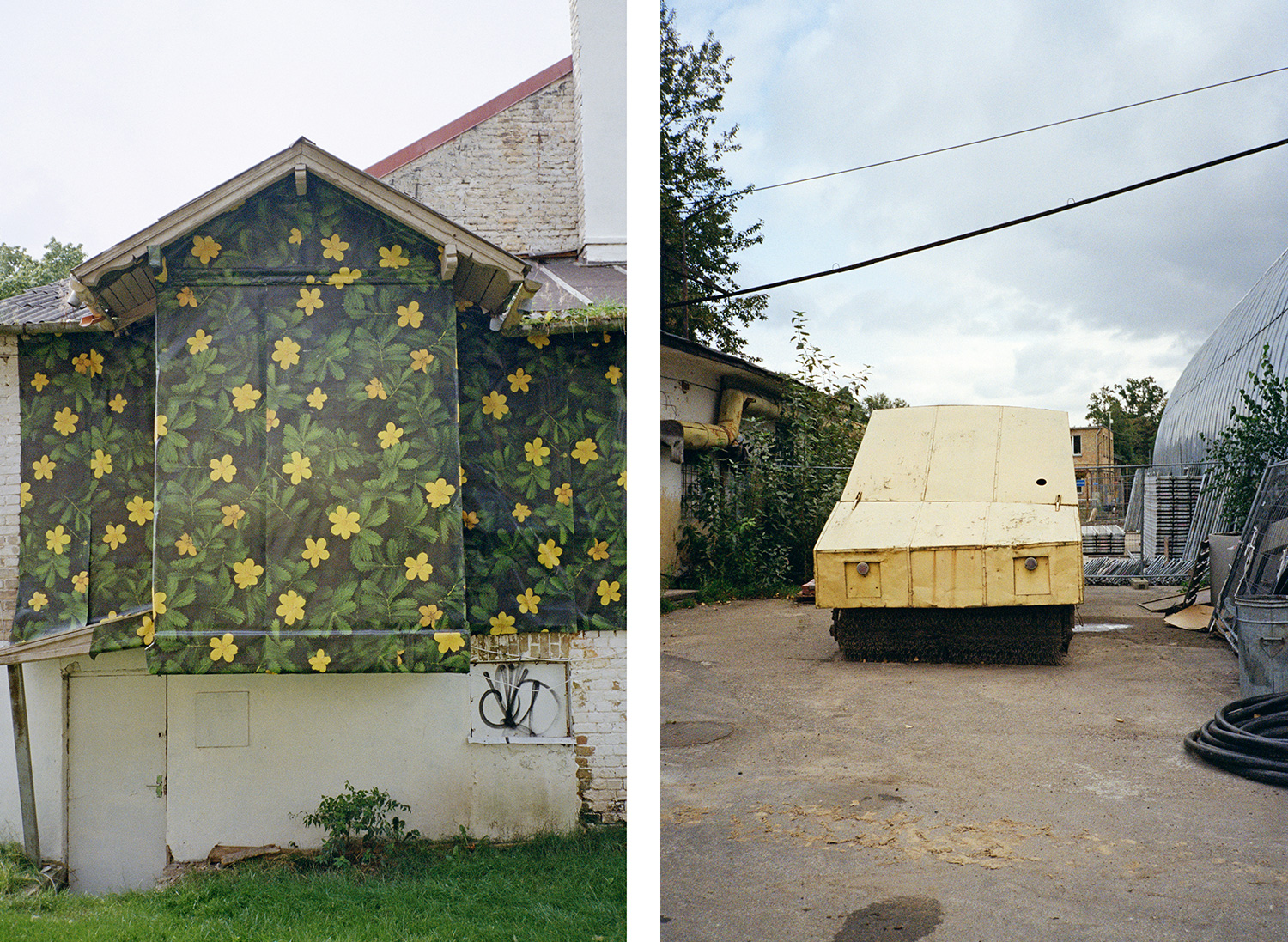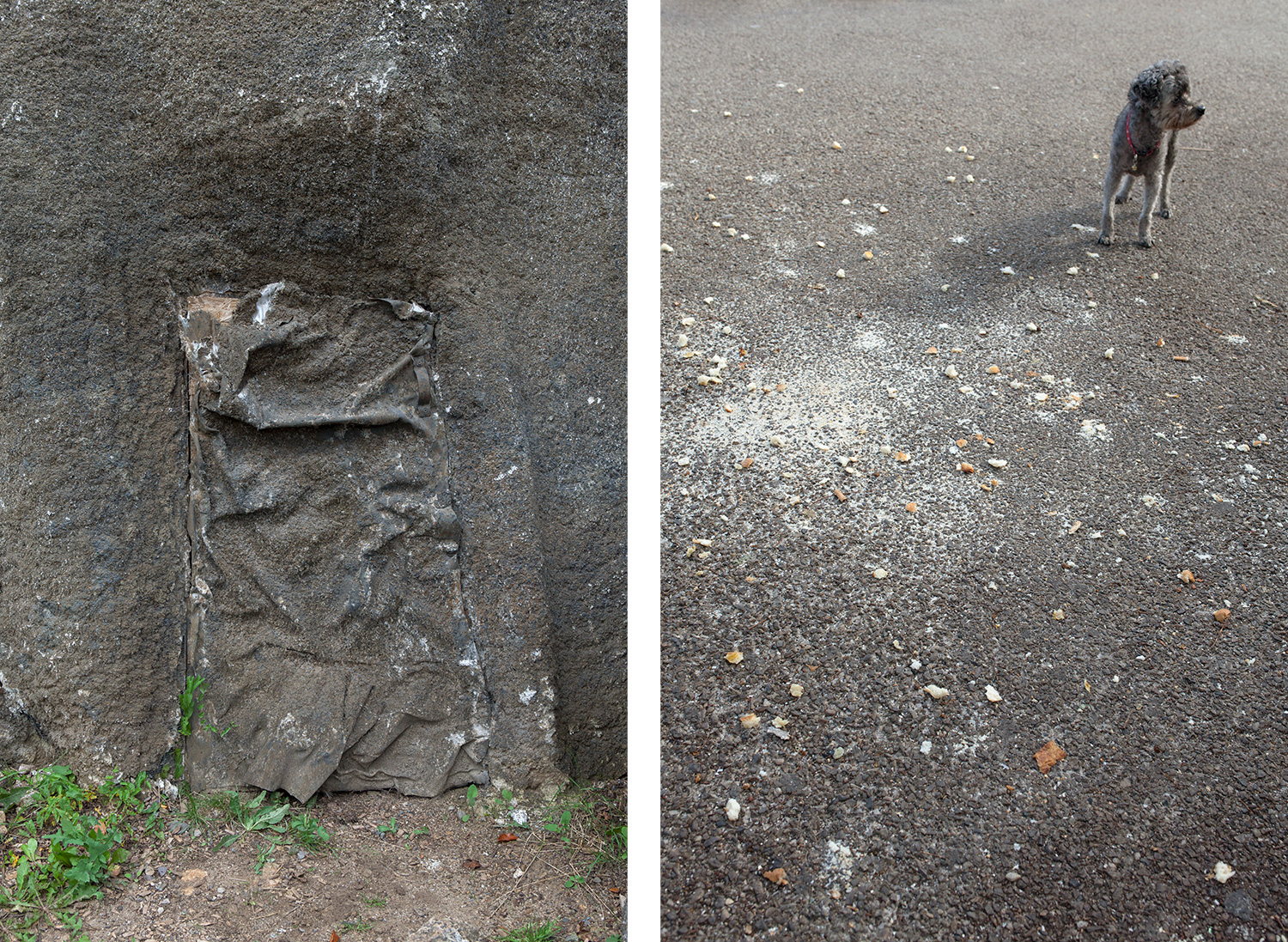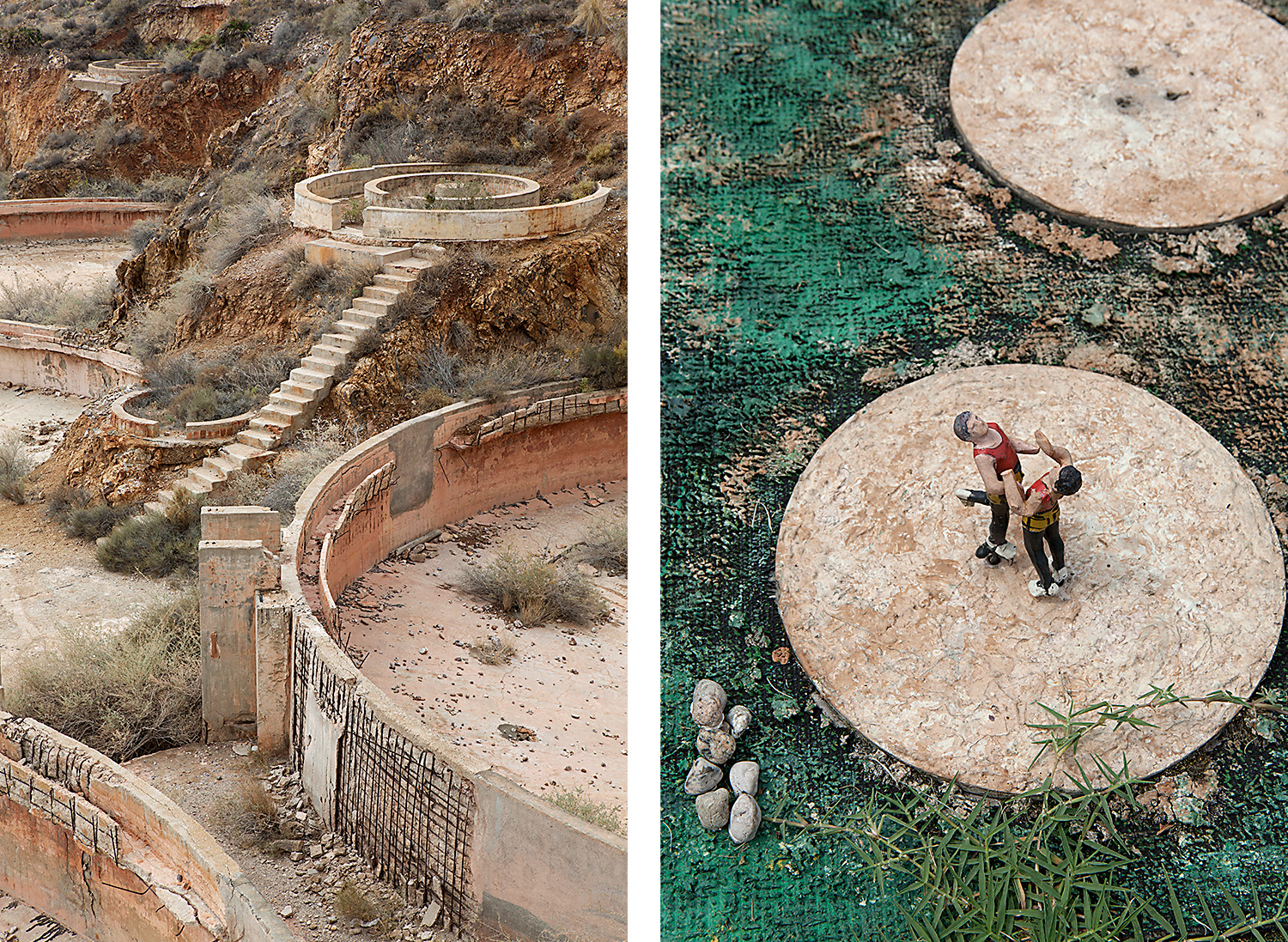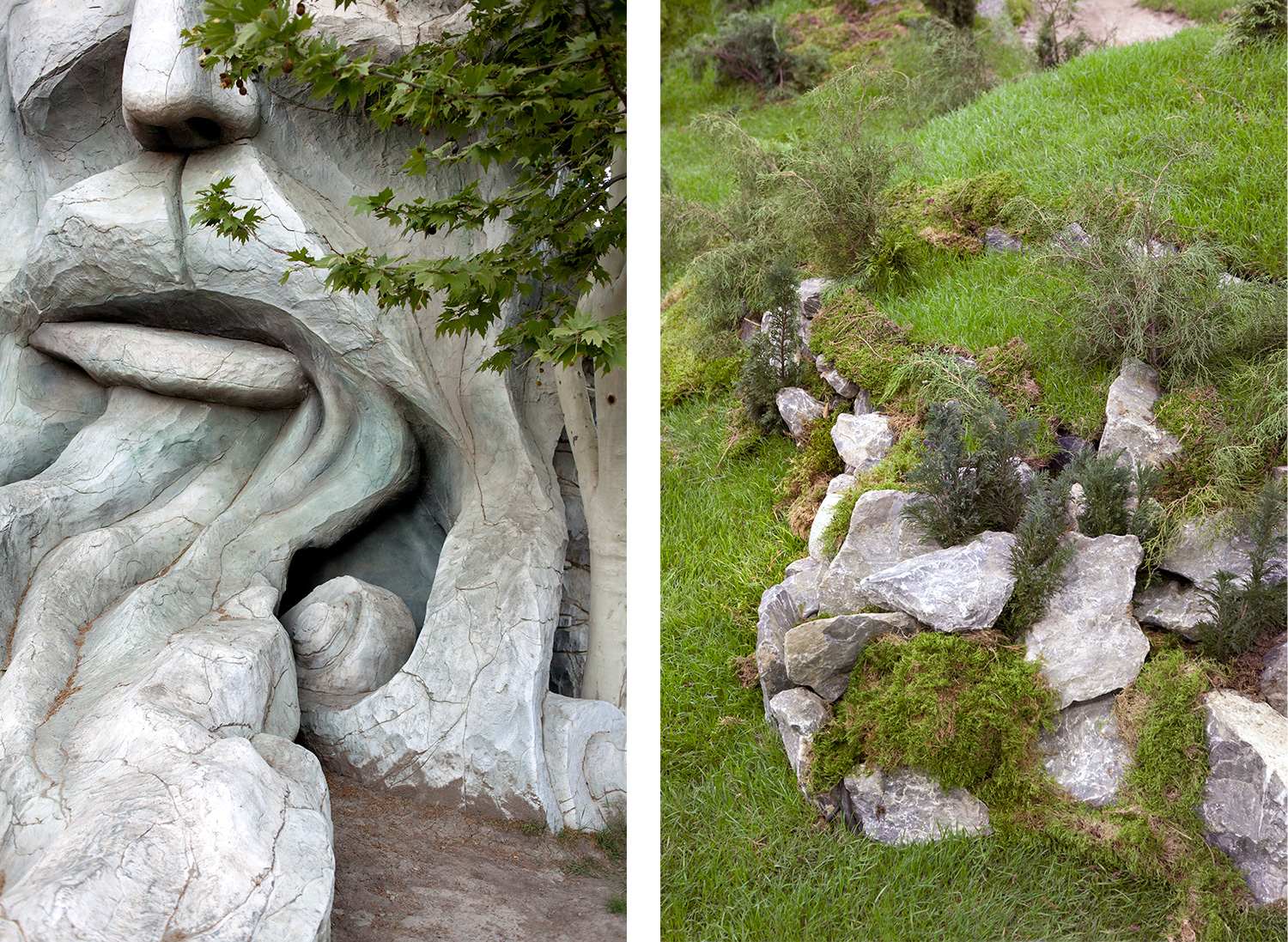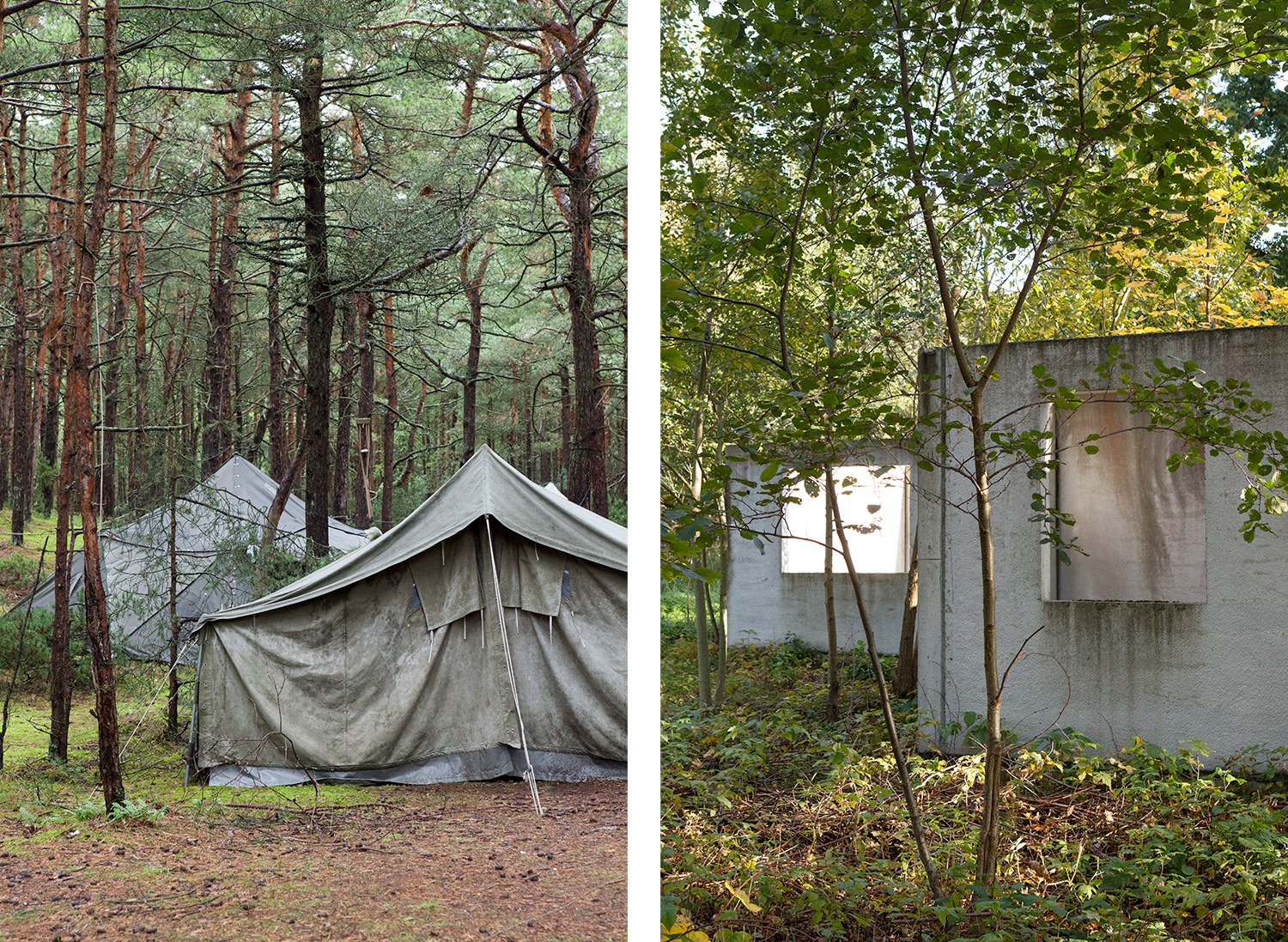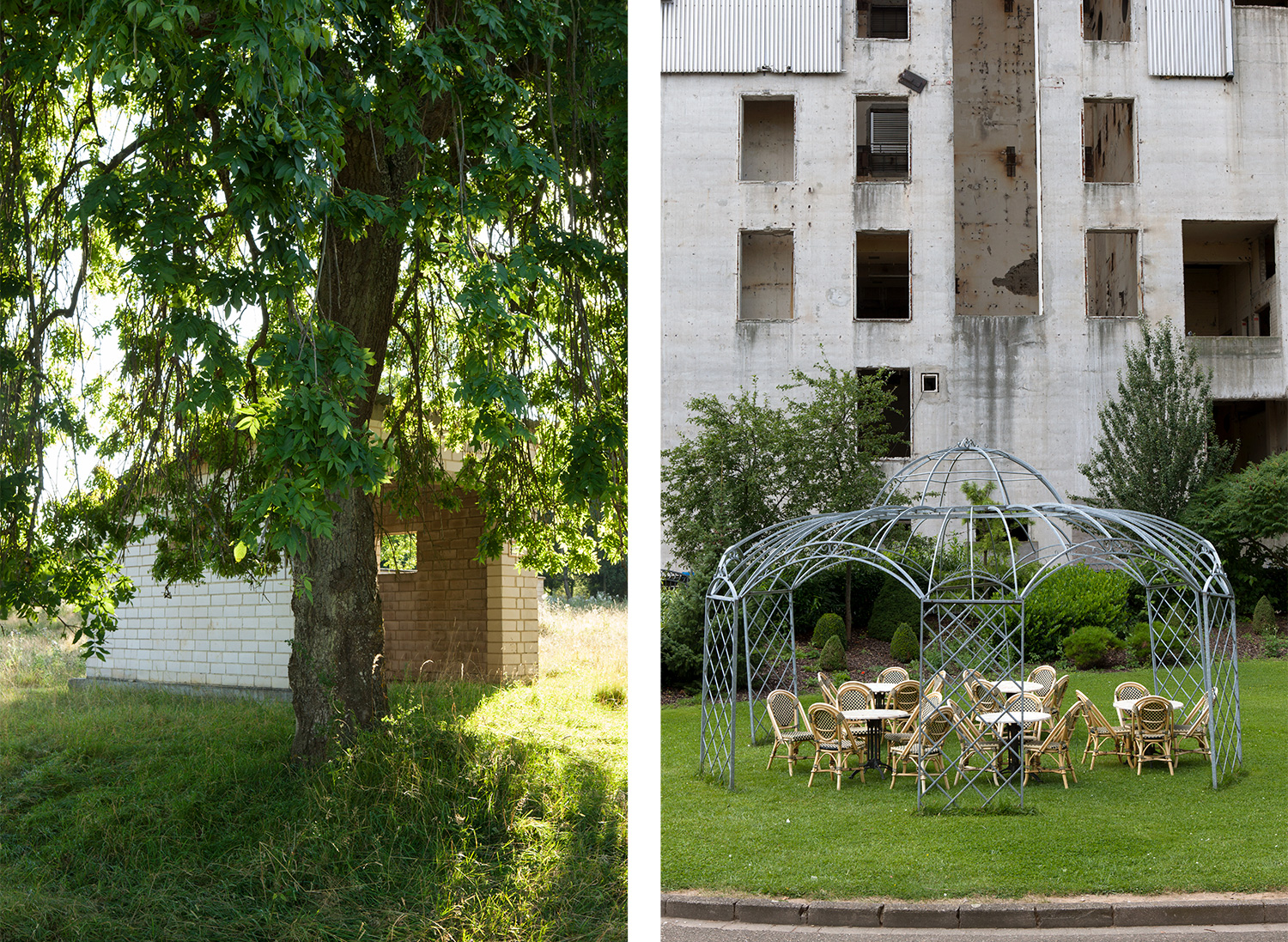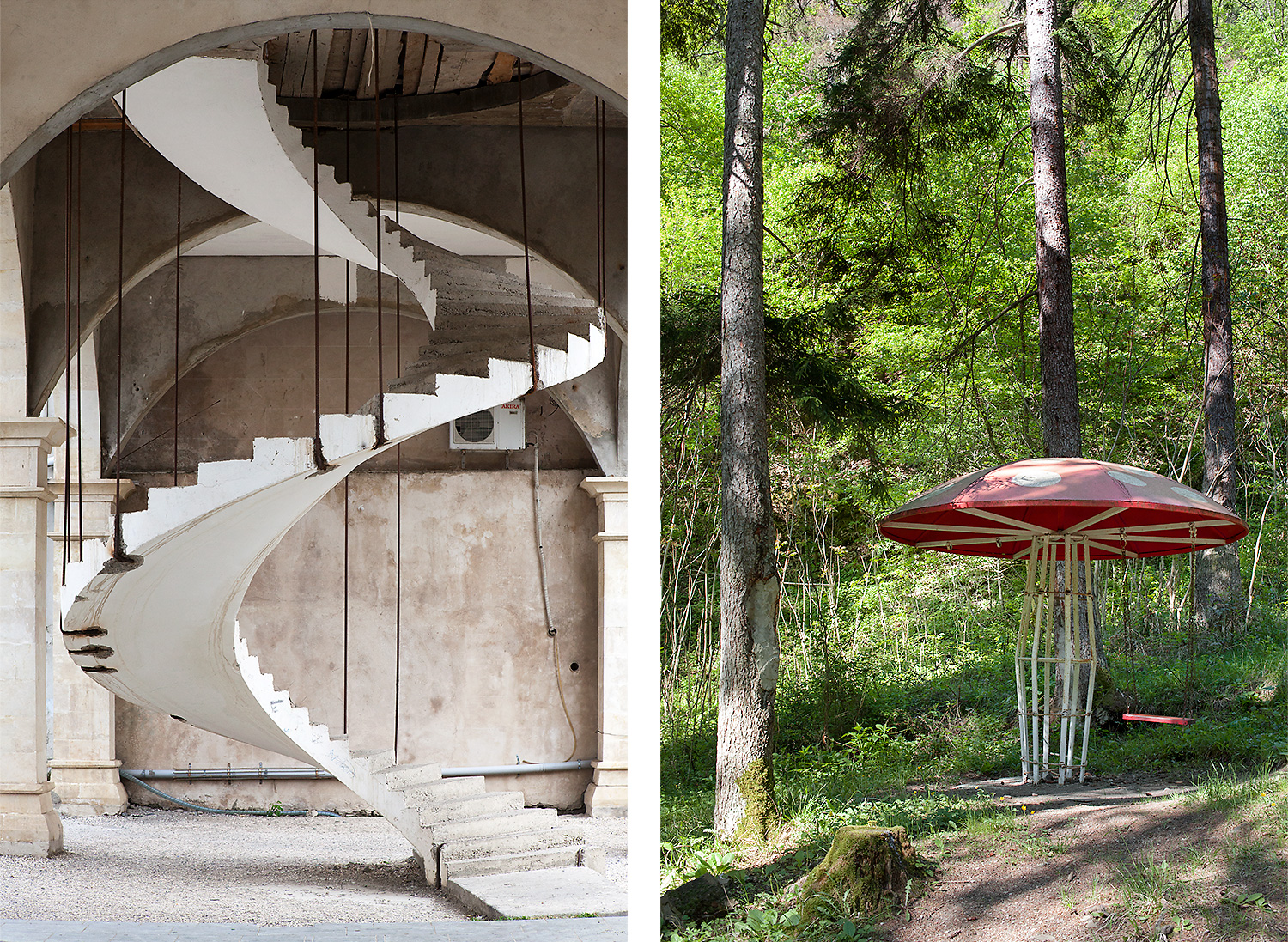Buildings and Figures
Buildings and Figures
Ongoing disappearance mixed with elements of growth, makes places and things seem unreal.
A touch of the unreal can be more powerful than any reality – if one can discern it.
Excised from sleepy disorder, they reveal themselves through my viewing: places and things with demands, peripheries and Eastern Europe, a miniature wonderland, a children’s merry-go-round – all ceasing to exist in this way after I have left.
Ute Behrend
© Maik Schlüter 2018
Ute Behrend – Bauten und Figuren | Buildings and Figures
In this work, Ute Behrend forces reality into a concept of two images that belong together. But the affiliation of the images and spaces is pure fiction; the line that is found in one image and continues in the next is a formal setting of the photographer.
Like a forensic scientist, she reassembles the world, the crime scene, in order to find some meaning in the pieces of the puzzle. Some fragments seem to fit together seamlessly, but in reality they are located widely apart in space and time. Then again, visual analogies feign functional proximity and a coherent context, although neither exists. Everything appears as a hidden sign or clue, a logical next step in uncovering an invisible order. Yet the picture never completes itself. Ute Behrend's photographic spectrum consists of laconic descriptions of places, abstract settings that sometimes emphasize graphic qualities, as well as situational moments of tension, portraits and installations.
But also the relation between the effective size of an object, its two-dimensional depiction within a photograph, and what we as the observer then actually do see in it, is a central theme of this work. Under the guise of a supposedly realistic depiction, she also fools the observer with images of various mock-ups. Ultimately, it is not important for the reception of an image whether it is real architecture or merely a mock-up: The reality of a photograph is autonomous in any case, even if it is inevitably always tied to some kind of reality. For everything on the pictorial level can seem real: cardboard miniatures then appear more real than the real parking garages, the real landscapes, the real city views, and real interiors may again look like miniatures, and even absurd collages of materials can be presented to the eye in such a way that we can recognize urban scenes and architecture in them. In Ute Behrend's work, the difference is even more subliminal, hardly or not at all recognizable. Here, too, the ambiguity of the world and its images becomes apparent. Spatial structure and projection transform into a spiral of relativity.
In Ute Behrend's work, colours and forms, nature and culture, destruction and beauty, personality and role-playing all appear with equal significance. In her work, constancy and change go hand in hand. Everything happens on the thin ice of the experience of reality. While her visual language seems clear and direct at first glance, the supposedly universal vocabulary conceals many secrets and deceptive visual abysses.
Maik Schlüter
